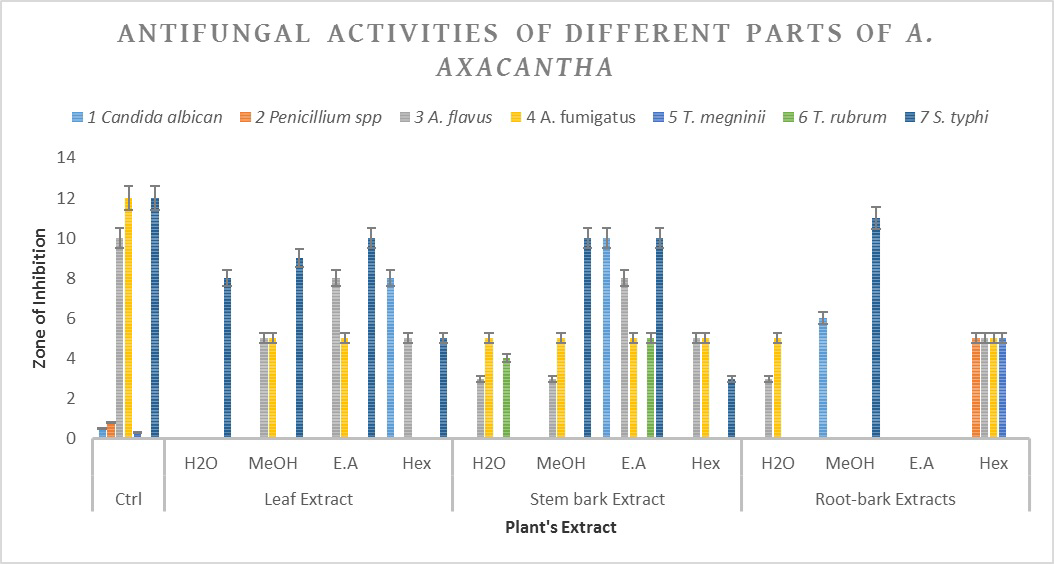Antimicrobial Assessment of Different Solvent Extracts of the Root-bark, Stem-bark and Leaves of Acacia ataxacantha Linn.
Keywords:
Acacia ataxacantha, infectious diseases, MIC, antimicrobial drugsAbstract
Acacia ataxacantha DC. (Fabaceae) is one of the most important medicinal plant used traditionally in managing many ailments in Nigeria particularly infectious diseases. In this study, the stem-bark, roots and leaves of A. ataxacantha were extracted using hexane, ethyl acetate, methanol and water (from non-polar to polar solvents). These extracts were initially screened to identify the secondary metabolites present. They were then examined against eight bacteria (Pseudomonas aeruginosa, Escherichia coli, Staphylococcus aureus, Bacillus subtilis, Klebsiella pneumoniae, Streptococcus pneumonia, Proteus mirabilis, Salmonella typhi-murium) and seven fungi (Candida albicans, Penicillium spp, Aspergillus fumigatus, Aspergillus flavus, Trichophyton megninii, Trichophyton. rubrum, Salmonella typhi-murium). Disc diffusion method was employed to establish the antimicrobial activity of the plant parts. Serial dilution method was used to determine the minimum inhibitory concentration (MIC), minimum bactericidal (MBC) and fungicidal concentration (MFC). Methanol and hexane fractions of the root bark exhibited the highest inhibition zone ranging from 19-21 mm against the tested microorganism hence these were further assessed by determining their MIC, MBC and MFC. MIC value for the aqueous extract of the plant was 25 mg/cm3 against the fungi used while the methanol fraction was 15 mg/cm3 against the bacteria used. This work suggests that Acacia ataxacantha may possess compounds which can be a template for acquiring novel drugs which could act against infectious diseases.

Published
How to Cite
Issue
Section
Copyright (c) 2019 Journal of the Nigerian Society of Physical Sciences

This work is licensed under a Creative Commons Attribution 4.0 International License.







